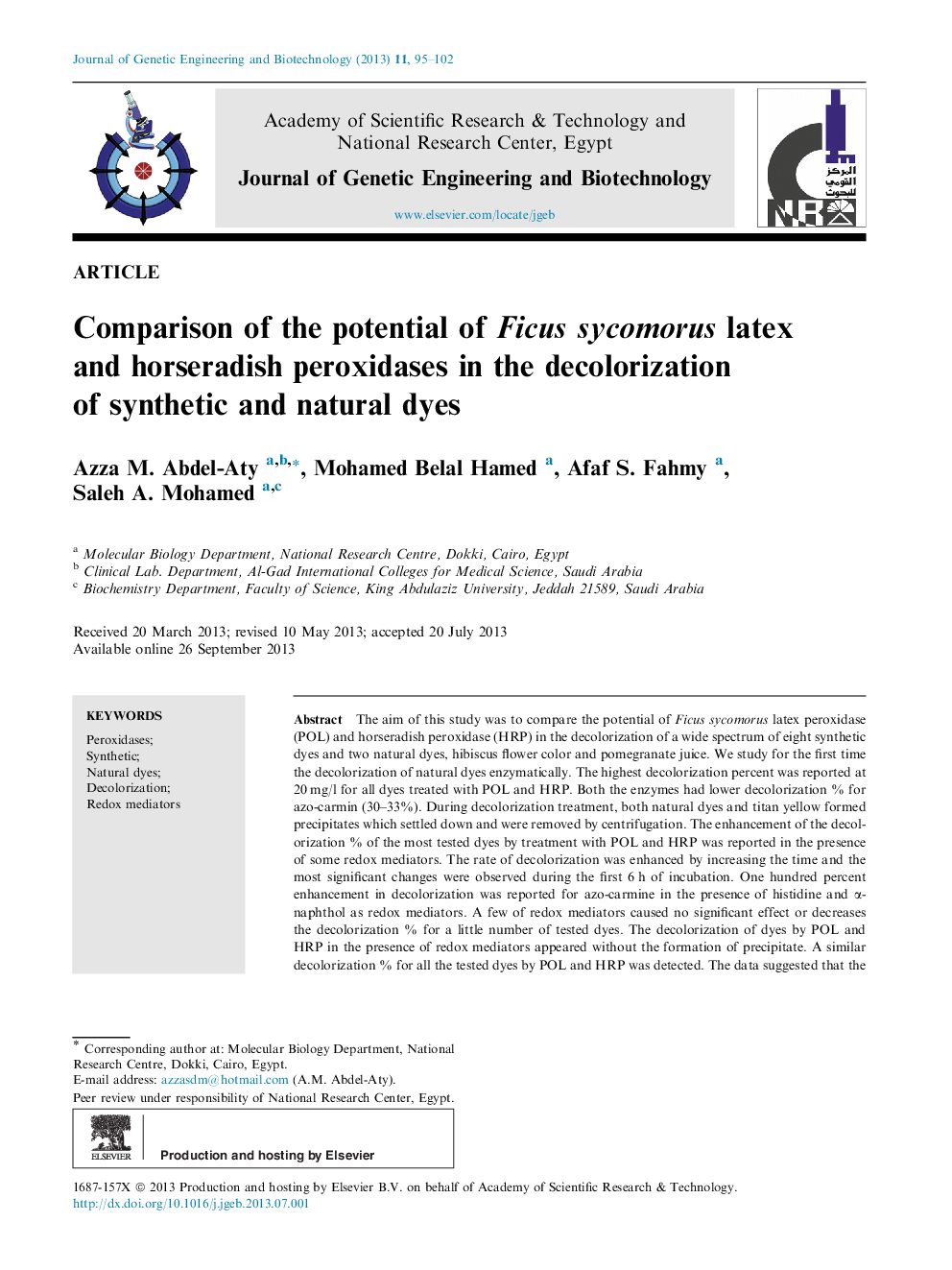| Article ID | Journal | Published Year | Pages | File Type |
|---|---|---|---|---|
| 2087916 | Journal of Genetic Engineering and Biotechnology | 2013 | 8 Pages |
The aim of this study was to compare the potential of Ficus sycomorus latex peroxidase (POL) and horseradish peroxidase (HRP) in the decolorization of a wide spectrum of eight synthetic dyes and two natural dyes, hibiscus flower color and pomegranate juice. We study for the first time the decolorization of natural dyes enzymatically. The highest decolorization percent was reported at 20 mg/l for all dyes treated with POL and HRP. Both the enzymes had lower decolorization % for azo-carmin (30–33%). During decolorization treatment, both natural dyes and titan yellow formed precipitates which settled down and were removed by centrifugation. The enhancement of the decolorization % of the most tested dyes by treatment with POL and HRP was reported in the presence of some redox mediators. The rate of decolorization was enhanced by increasing the time and the most significant changes were observed during the first 6 h of incubation. One hundred percent enhancement in decolorization was reported for azo-carmine in the presence of histidine and α-naphthol as redox mediators. A few of redox mediators caused no significant effect or decreases the decolorization % for a little number of tested dyes. The decolorization of dyes by POL and HRP in the presence of redox mediators appeared without the formation of precipitate. A similar decolorization % for all the tested dyes by POL and HRP was detected. The data suggested that the peroxidase/mediator system was an effective biocatalyst for the decolorization of synthetic and natural dyes, and POL could be used as a potential option for the application of dye decolorization.
